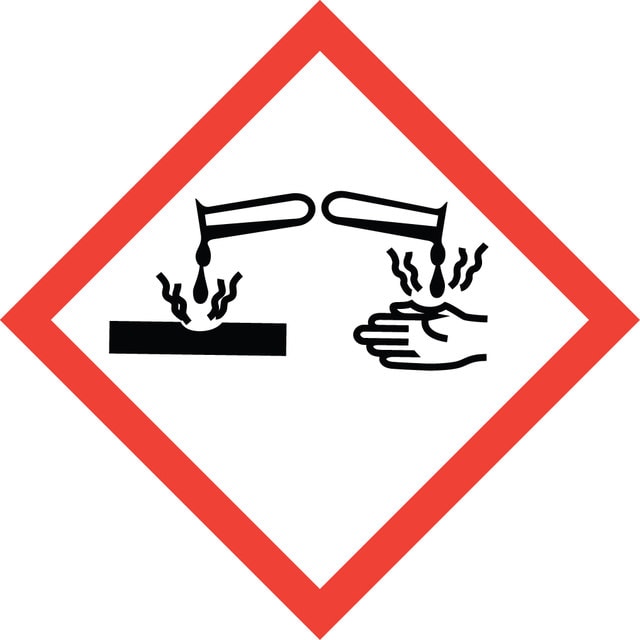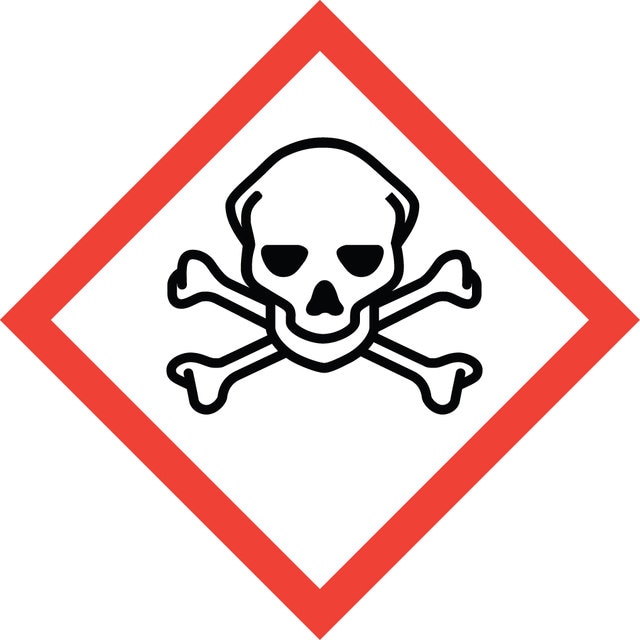产品名称
Bromine, for synthesis
SMILES string
[Br-]
InChI
1S/BrH/h1H/p-1
InChI key
CPELXLSAUQHCOX-UHFFFAOYSA-M
vapor pressure
233 hPa ( 20 °C)
form
liquid
reaction suitability
reagent type: oxidant
kinematic viscosity
0.314 cSt(20 °C)
bp
58.8 °C/1013 hPa
mp
-7.3 °C
solubility
35 g/L
density
3.12 g/cm3 at 20 °C (liquid)
storage temp.
15-25°C
Quality Level
Analysis Note
Assay (iodometric)≥ 99.0 %AppearanceBrownish-red fuming liquid
Application
Bromine can be used as an oxidizing agent for the oxidation of:
Bromine can also be used along with other co-reactants such as hexamethylphosphoric triamide (HMPA) and bis(tributyltin) oxide (HBD) to selectively oxidize secondary alcohols. However, bromine/nickel carboxylates convert 1,4-diols to γ-butyrolactones by selective oxidation of the primary alcohols.
- Primary alcohols to either aldehydes or esters and secondary alcohols to give ketones.
- Alcohols or diols to tetrahydrofurans in the presence of silver(I) salts.
- Enediol bis-trimethylsilyl ethers to α-diketones.
- Aldehydes to esters in the presence of alcohol solvents and sodium bicarbonate buffer.
- Aliphatic and aromatic thiols to disulfides.
Bromine can also be used along with other co-reactants such as hexamethylphosphoric triamide (HMPA) and bis(tributyltin) oxide (HBD) to selectively oxidize secondary alcohols. However, bromine/nickel carboxylates convert 1,4-diols to γ-butyrolactones by selective oxidation of the primary alcohols.
General description
for synthesis
signalword
Danger
hcodes
Hazard Classifications
Acute Tox. 1 Inhalation - Aquatic Acute 1 - Eye Dam. 1 - Skin Corr. 1A
存储类别
6.1B - Non-combustible, acute toxic Cat. 1 and 2 / very toxic hazardous materials
wgk
WGK 2
flash_point_f
Not applicable
flash_point_c
Not applicable
法规信息
新产品
此项目有
Bromine
Goehring RR
eEROS (Encyclopedia of Reagents for Organic Synthesis) (2001)
Preparation of disulfides by the oxidation of thiols using bromine
Wu Xiaoming, et al.
Synthetic Communications, 26(1) (1996)
Bromine as an oxidant for direct conversion of aldehydes to esters
Williams DR, et al.
Tetrahedron Letters, 29(40) (1988)
我们的科学家团队拥有各种研究领域经验,包括生命科学、材料科学、化学合成、色谱、分析及许多其他领域.
联系客户支持

